Here is the list of the most beautiful salt fields in Vietnam.
Vietnamese countryside is not only brilliantly beautiful because of the golden rice fields in the harvest season or the image of the blue sea, white sand, yellow sunshine. But somewhere, in the coastal areas, people are also fascinated by the salt fields crystallized from the pearl drops of the sea.
Along with the coastal areas, besides the thousand-life karma floating on the waves, in the period from December of this year to May of the following year, people in some seas are busy again working as salt to earn living.
Ca Na (Ninh Thuan)

About 30 km out of Phan Rang Thap Cham city is Ca Na, a small fishing village located on the border between Ninh Thuan and Binh Thuan. Life here is peaceful when fishermen go out to sea to fish every day, while salt farmers rake in salt.
With more than a thousand hectares of salt fields stretching along the coast, Ca Na is known as the largest “salt warehouse” in the country.
Based on the rocks on the shore, the salt field plots of tens of hectares are built each square. Ca Na salt is rated by experts as the best salt in Southeast Asia.
Phuong Cuu (Ninh Thuan)
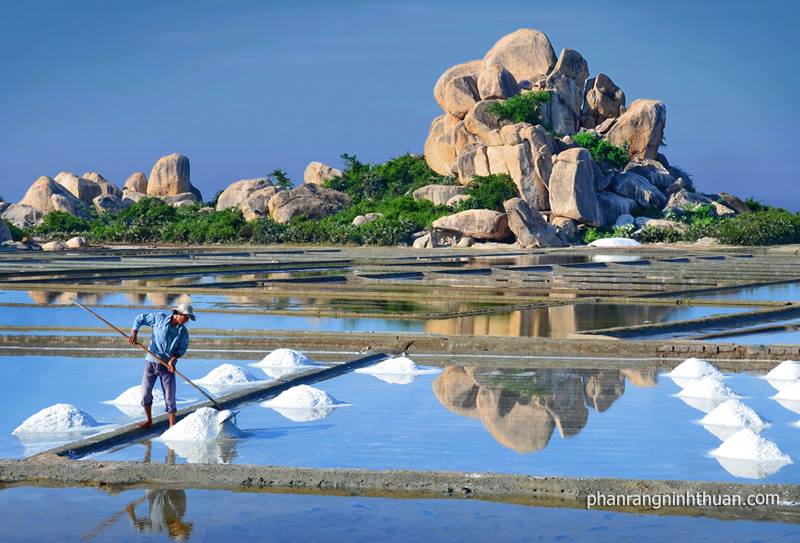
Phuong Cuu is considered one of the largest salt fields in the Central region, located about 15 km from Phan Rang city, in Ninh Hai district, Ninh Thuan province.
The immense white color of the salt field stands out between the blue sky and the brown color of the field, creating a characteristic feature of the sunny and windy land. At this point, you can see the lively scene combining the beauty of the natural landscape with the beauty of labor enthusiasm.
People lead seawater into the fields, after a time the water evaporates leaving salt particles on the field. Salt is scraped into small mounds to dry, then collected into raw salt stores, then sent to factories for cleaning before being brought to the market.
Diem Dien (Thai Binh)
Diem Dien salt-making village is located 110 km southeast of Hanoi, in Thai Thuy district, Thai Binh province. It is one of the three largest biosphere reserves in the Red River Delta region.
From April to July, especially April and June, the wind is strong and the sun is hot, which is the time when salt farmers harvest the biggest, boldest, and most solid white salt grains.
Hon Khoi (Khanh Hoa)
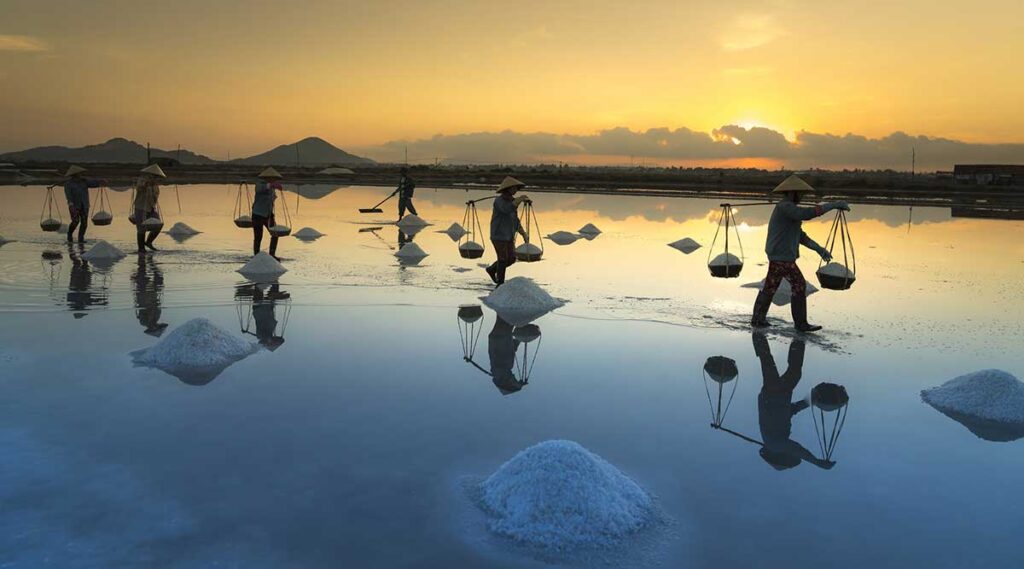
White Hon Khoi salt fields in Van Phong bay are always an inspiration for photographers. Located about an hour north of Nha Trang city, in Ninh Hoa district, Hon Khoi salt fields by Van Phong bay create a strange landscape.
From a distance, the field is like a large mirror reflecting the dawn and the austere yet joyful figure of the salt-men here.
Cho Ben (Vung Tau)
Vung Tau coastal city is not only brilliantly beautiful by the image of the blue sea, white sand, golden sunshine, but also attracts visitors with beautiful and very famous salt fields in Vietnam.
That is Cho Ben salt field in An Ngai commune, district, Long Dien District, Ba Ria – Vung Tau province.
To get here, from Ba Ria along provincial road 44A to Long Hai sea, you will be able to see firsthand a wild, immense salt field, stretching all the way to the horizon.
Sa Huynh (Quang Ngai)
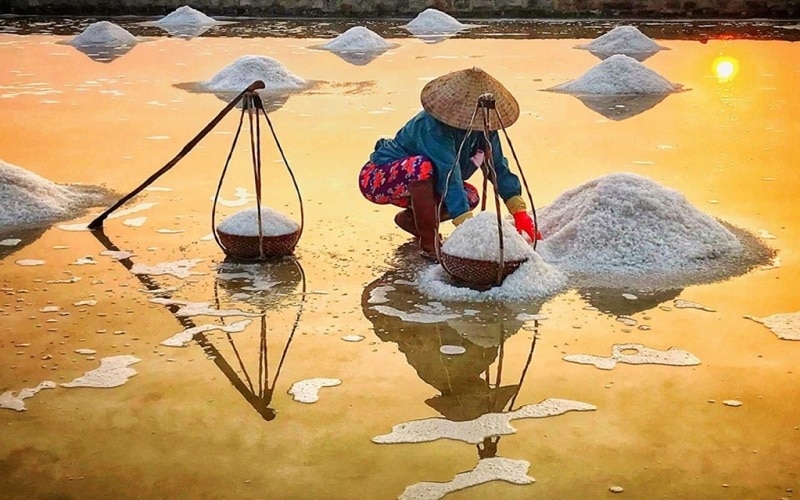
Sa Huynh salt village is located at the southernmost tip of Quang Ngai province, in the Duc Pho district, about 60 km from the city center. Sa Huynh has a beautiful beach and is one of the famous salt fields in Vietnam.
From National Highway 1A going through the territory of Sa Huynh village, we can see the salt fields in succession like mirrors that sparkle in the sun. Formed in the 19th century, the Sa Huynh salt field has become one of the most important salt fields in Vietnam.
Coming to Sa Huynh from December of this year to May next year, you will see a rustic and simple beauty of the people working here, who work hard from morning to afternoon to produces bold, pure white salt grains, that is why the salt-making profession here is still circulated, helping people to earn a living and stabilize their finances.
Hai Hau (Nam Dinh)
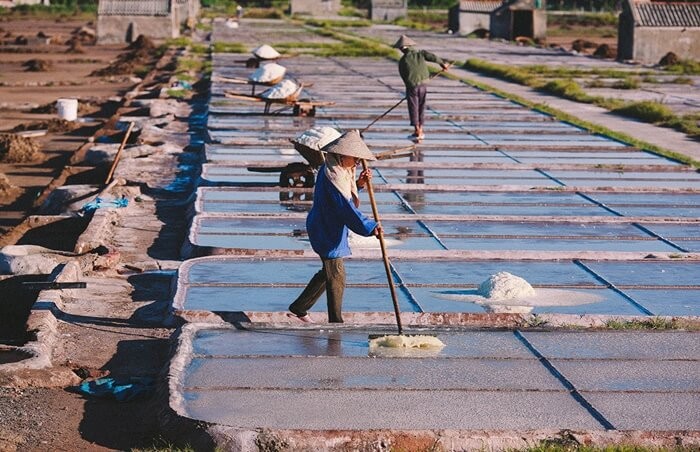
Hai Hau salt field is located in Van Ly village, Hai Ly commune, Hai Hau district, about 100km from Hanoi. If you go from Hanoi, you can choose to go by motorbike in the early morning or take about 2 hours.
It has a long tradition of making salt. A working day of salt farmers starts from very early to late afternoon. If you come here on summer days, you will witness an extremely magnificent and beautiful natural picture at sunset.
It will definitely be an enjoyable experience that you will not forget.
Long Dien (Vung Tau)
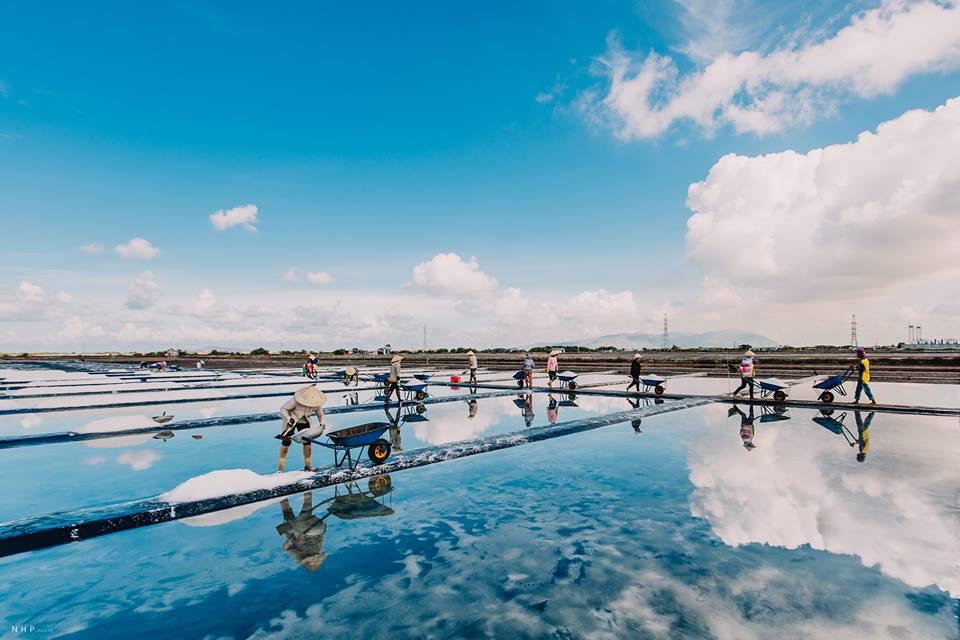
If you have the opportunity to visit the Long Hai beach of Ba Ria – Vung Tau city, do not forget to visit the field you want to be located in Long Dien district to see firsthand the stretched salt fields and also very beautiful.
Bach Long (Nam Dinh)
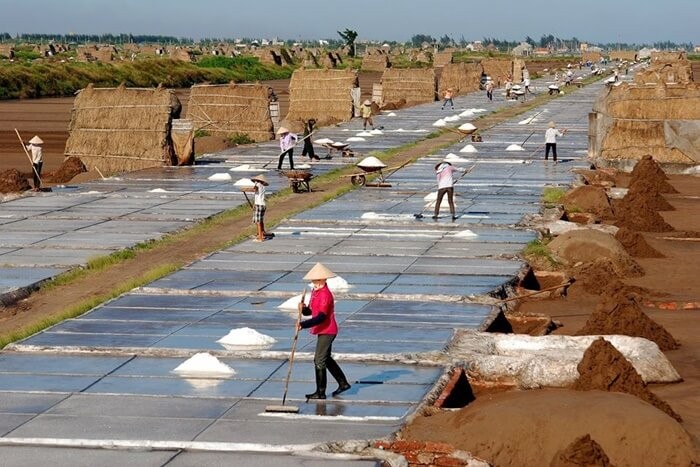
This can be considered as one of the largest salt fields in the North with an area of about 230 hectares in Bach Long Commune, Giao Thuy District, Nam Dinh.
This is a traditional and long-standing salt village of Nam Dinh, not only famous for its tradition but also very beautiful because of the natural landscape here. It will be very suitable for visitors to enjoy the fresh air and have beautiful pictures when coming here.
Bac Lieu

Bac Lieu is a province in the Mekong Delta, located on the Ca Mau peninsula, the southernmost land of Vietnam. In Bac Lieu, there are two districts that have long been associated with salt making, namely Hoa Binh and Dong Hai.
Salt in Bac Lieu has long been famous throughout the Southern region because of its rich and distinctive flavor. Not only that, with the immense salt fields, covered with pure white color, it makes a beautiful scene that attracts many tourists coming here every year.
Tourists should come here in the morning or evening to catch the best views of the salt fields.


